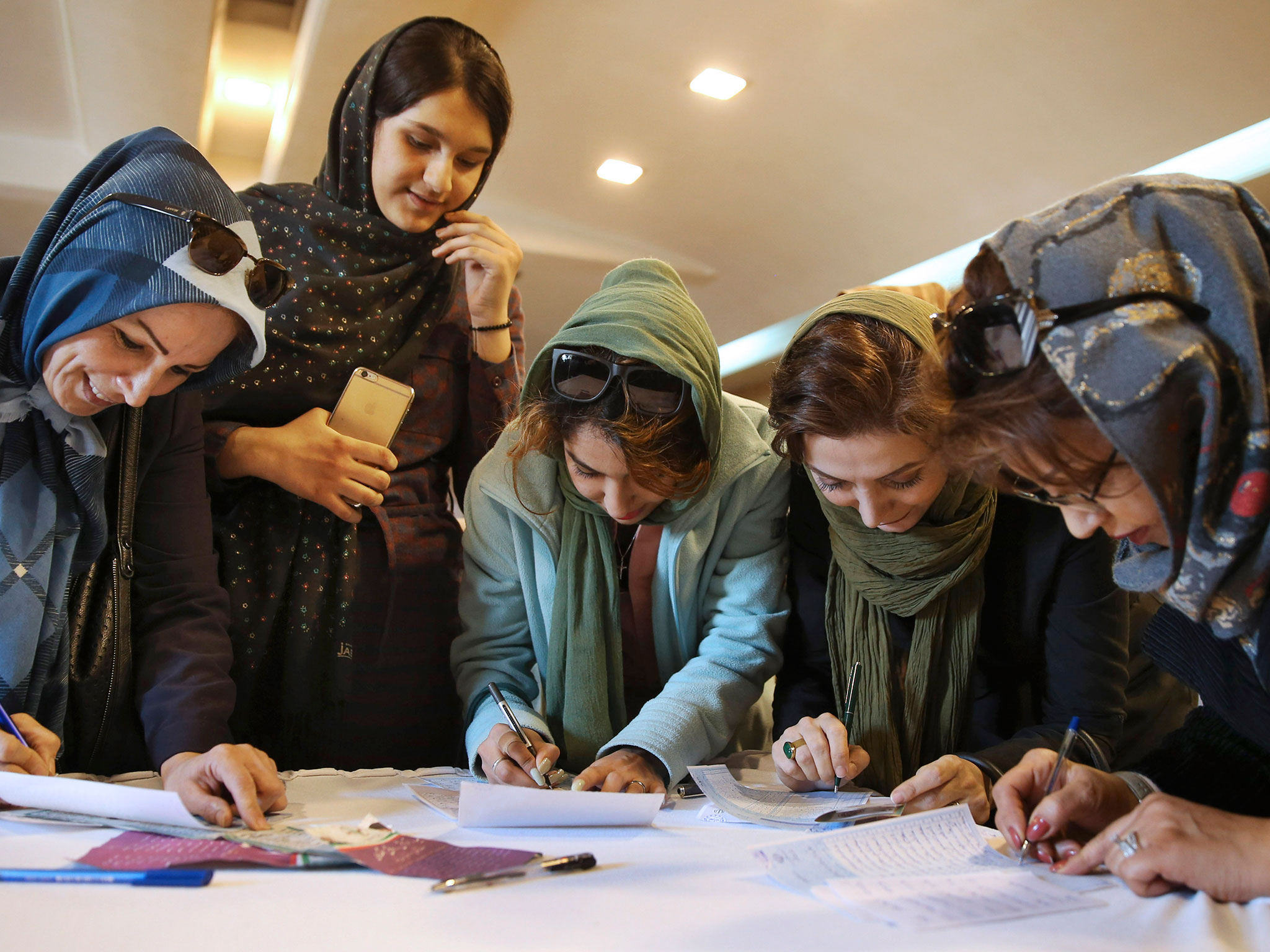
Arranged marriages are far from the main means through which nuptials take place in Iran. Long gone, too, are the days when a nervous young man in his early to mid-twenties would scribble his landline number on a piece of paper, look around to make sure the morality police were not watching, and pass the note to a young woman who had caught his eye.
Iran has caught the Internet dating bug big time and the preferred app du jour is Telegram, an encrypted messaging service that has also become the favored medium for political campaigns. During recent parliamentary elections, former president Mohammad Khatami used Telegram to urge Iranians to vote for a so-called List of Hope.
Now young Iranians are using the app to find companions for a night, or a lifetime.
Not long ago, young men and women would ride around in cars at night and cruise for possible assignations. Or they would go to underground parties where the music was loud, the Tequila flowed and the hosts had bribed the police to leave them alone so guests wouldn’t jump out of their skins at the sound of a doorbell.
Then came the Internet.
At first, the service was so slow that this writer remembers dialing up and going to the kitchen to put on a kettle for tea while waiting for the inbox to appear. Those who used the Internet on a regular basis were so far and few between that its future seemed sketchy at best.
Then broadband appeared and download speeds improved. According to tech entrepreneur Chris Schroeder, nearly 65 percent of Iranian homes have broadband access, nearly the same percentage as in the United States.
Even more significant has been the introduction and proliferation of cellphones with 3G service. Schroeder estimates that 20 million Iranians now have access to 3G data on their phones.
Iranian software engineers have been quick to replicate American websites like Match.com and e-Harmony, showing photos and profiles of those seeking companionship.
The Iranian government has clearly been taken by surprise by this development, as it has by so many other aspects of Iran’s increasingly sophisticated modern culture.
With the increasing number of people gaining access to the Internet, the government’s cyber police have had trouble keeping up. Already occupied filtering out dissident and pornographic websites, now the authorities have to watch for sites designated for dating that charge different membership fees for never-married people, divorcees and widows and widowers.
Much like the “chain” reformist newspapers during Mohammad Khatami’s presidency in the late 1990s and early 2000s — when one paper would be forced to shut down, another one would spring to life with a different name but the same agenda and editorial staff – a dating site may be blocked but a similar one will soon appear. The situation has gotten so dire, from the government’s point of view, that it issued a statement two years ago announcing that dating websites were illegal. By then, however, most such sites were marketing themselves as “marriage websites” to avoid getting shut down.
Of course, the surest way to attract a following in the Islamic Republic is to label something immoral or against religious laws. Almost instantaneously, people find ways to overcome the obstacles to access these forbidden sites.
Defeating the tech-savvy crowd has proved to be difficult for the government, which has resorted to entreaties to young Iranians to appreciate the forgotten value of marriage and to threaten punishment to those who go on line in search of temporary hook ups.
There has been a significant decline in nuptials, with a growing number of Iranian men and women not interested in starting families and an increasing number of couples cohabitating without getting married – what is known as white marriage.
Rather than discouraging youth from going online to find soul-mates, the government has established an official “spouse-finding” website, with counselors, monitors who make sure no one bends the rules and questionnaires to ensure the parties of their compatibility.
Seven months after the site was established in June 2015, the government declared that over 16,000 people had registered on the website and that there had been 140 marriages. However, most of those who signed up were religious or conservative and would have gone down a route similar to having an arranged marriage, except that they could now brag about how virtually cool their initial encounter had been.
The hottest digital method for dating in Iran is currently the Telegram application. The majority of Iranians — almost all of those who own smartphones and/or tablets — download and use Telegram on a regular basis.
There are several Telegram groups, which have labeled themselves as facilitating introductions for marriage and ask for payment, starting at $10 a month, to enter the chat room with a designated, supposedly compatible spouse-to-be, defined by questionnaires and prior vetting. Many of these channels are not really for marriage and are hanging by a thread for fear of being uncovered by the authorities. Among them is a Telegram channel for Tehran’s gay and lesbian singles.
In the end, the government may choose to launch a marital website of its own on Telegram or whatever the next popular app turns out to be on the theory that if you can’t beat them, join them.
* This article first appeared on Atlantic Council



